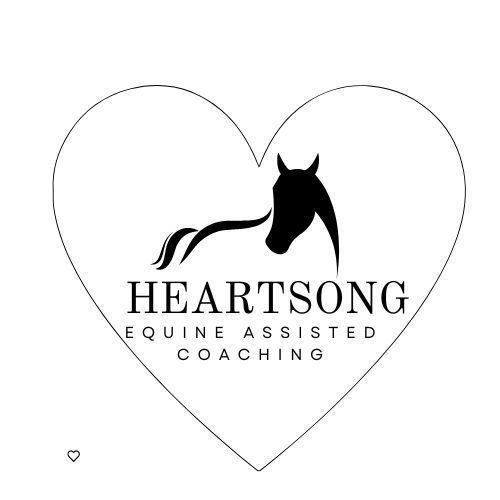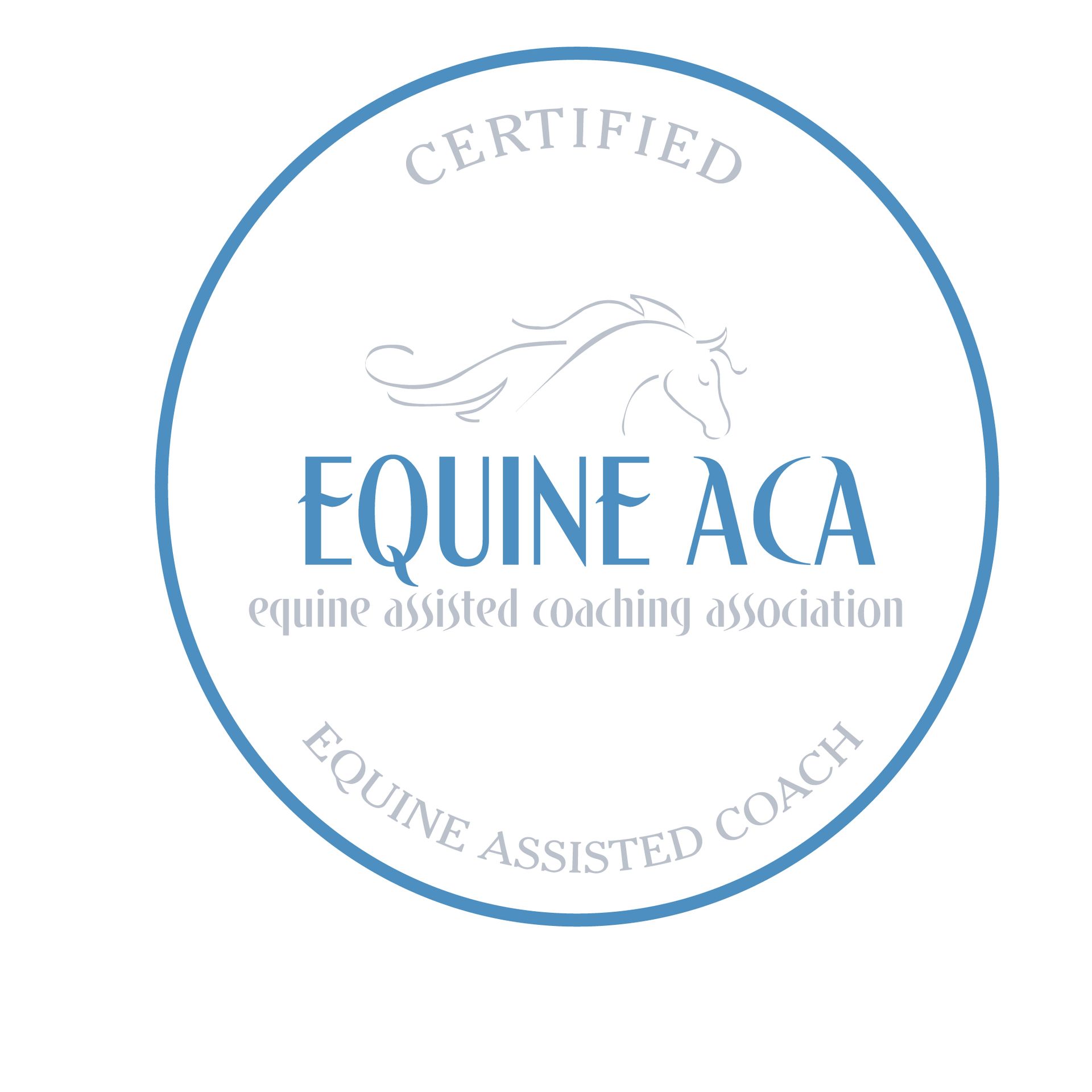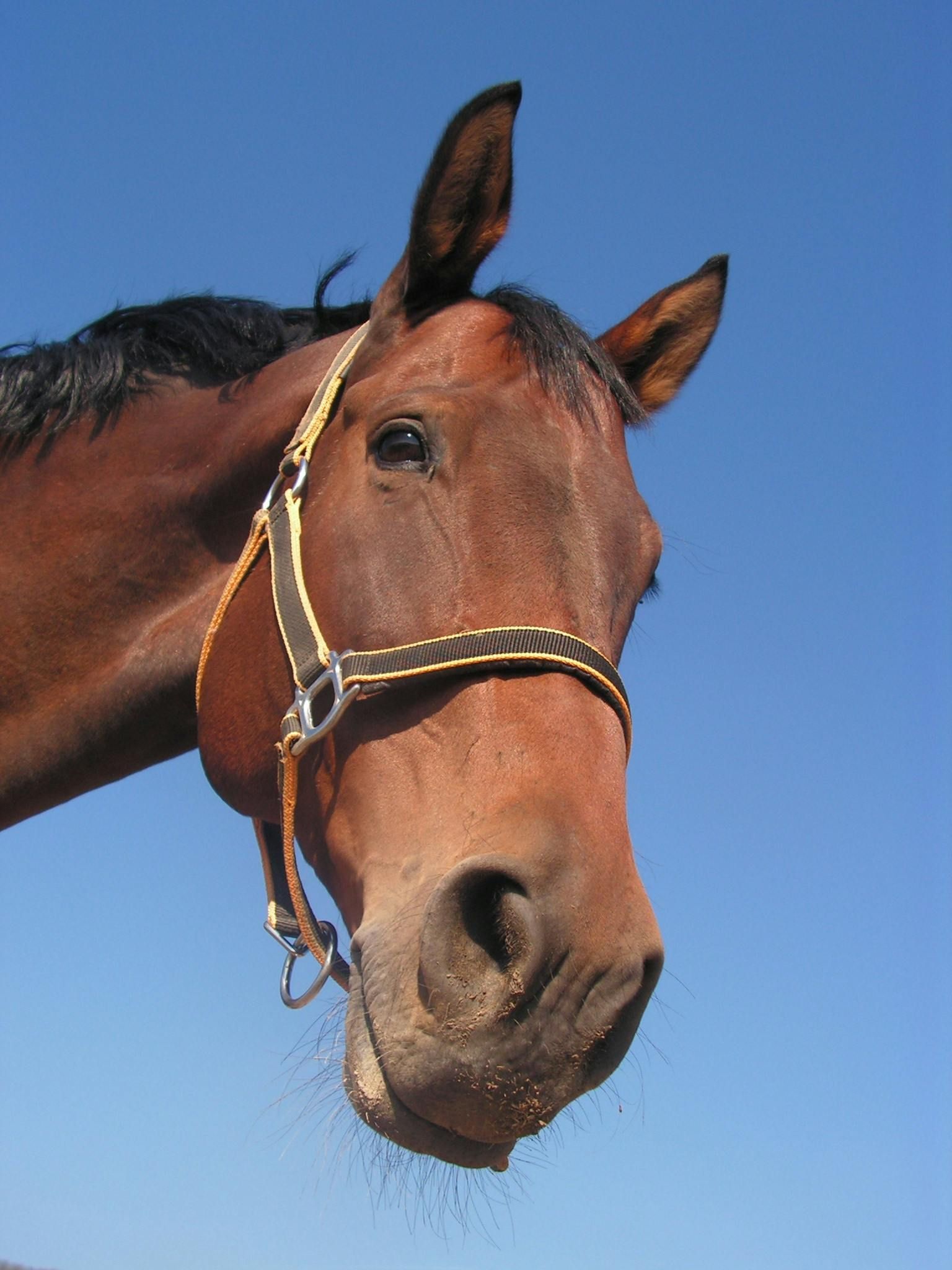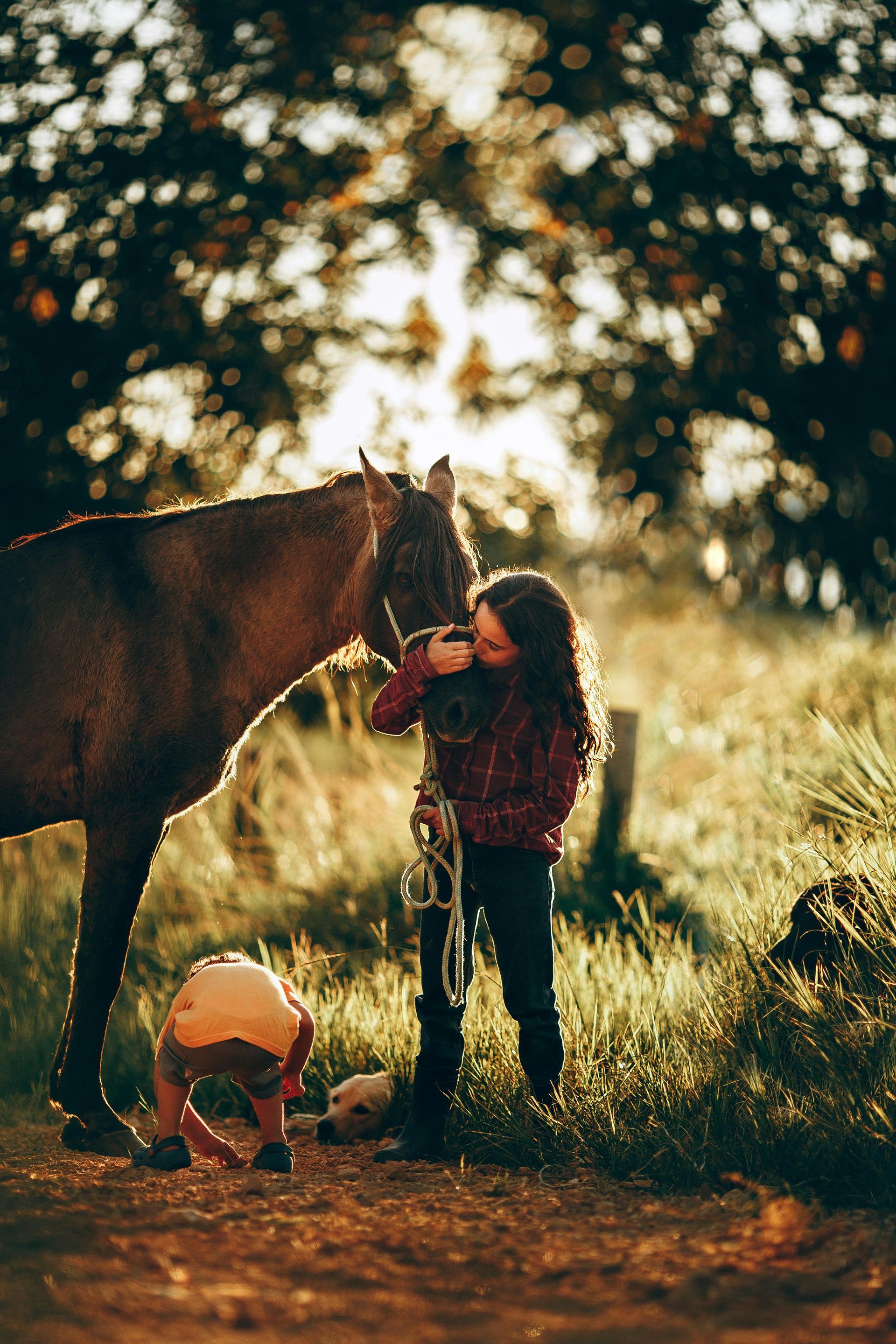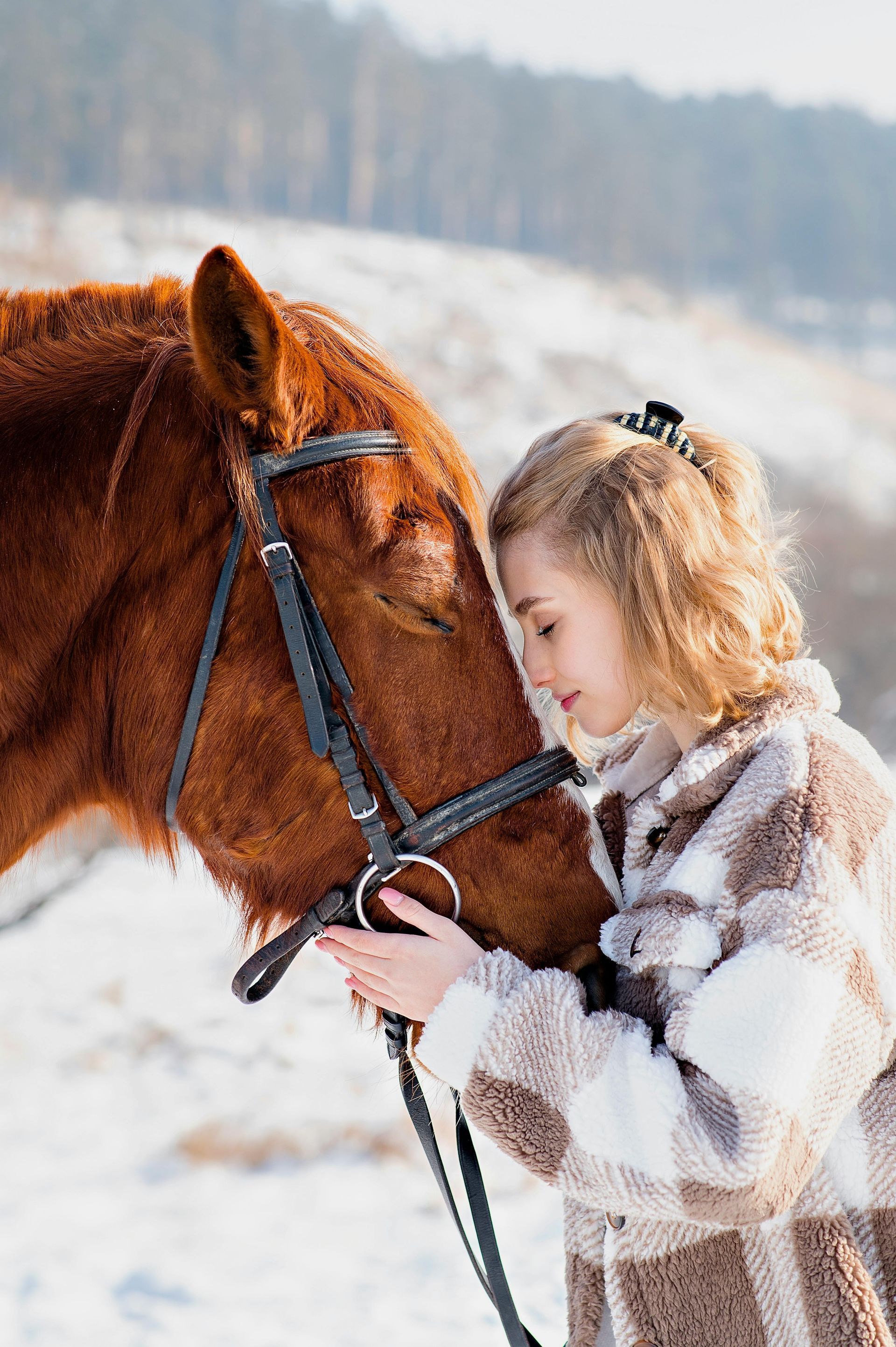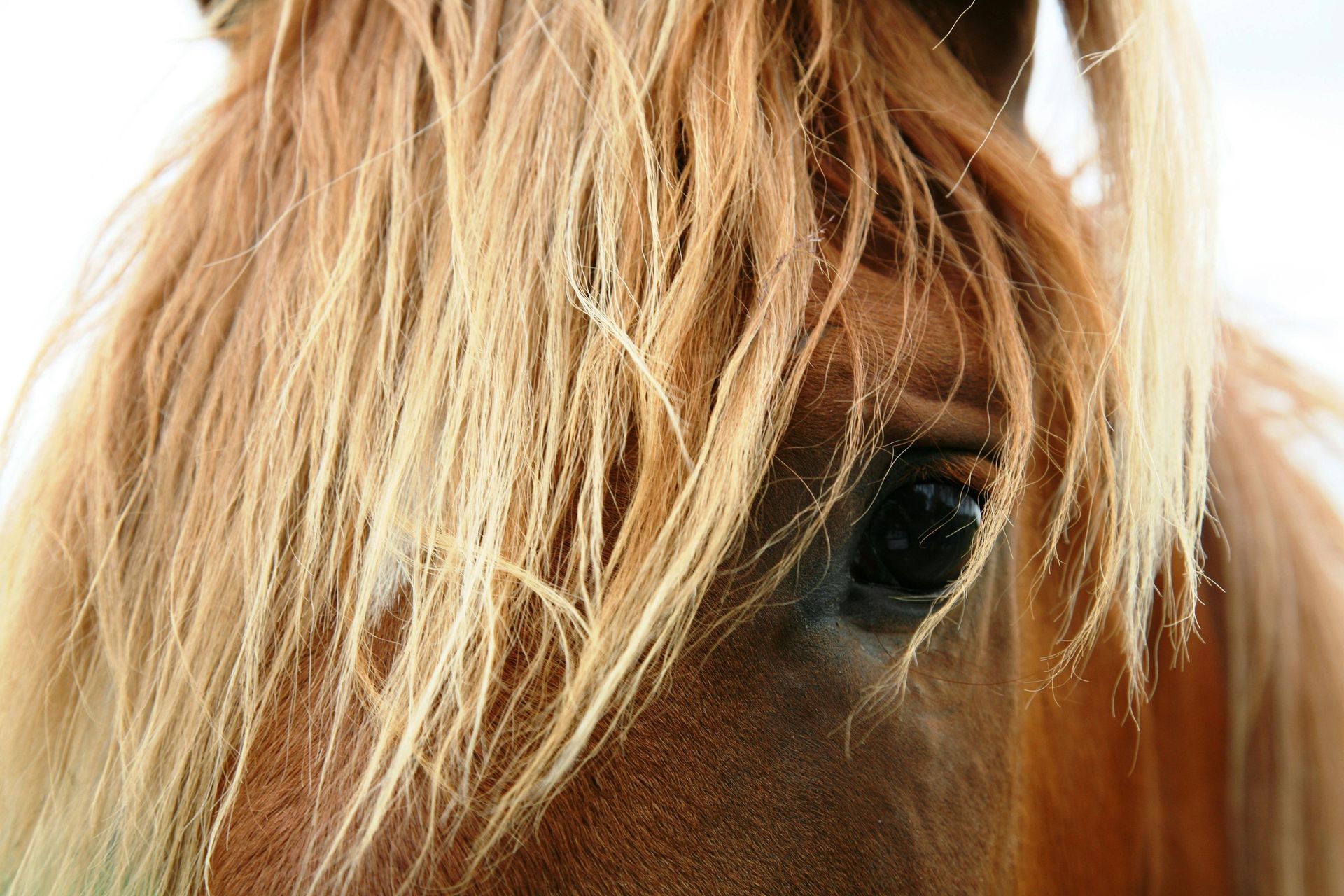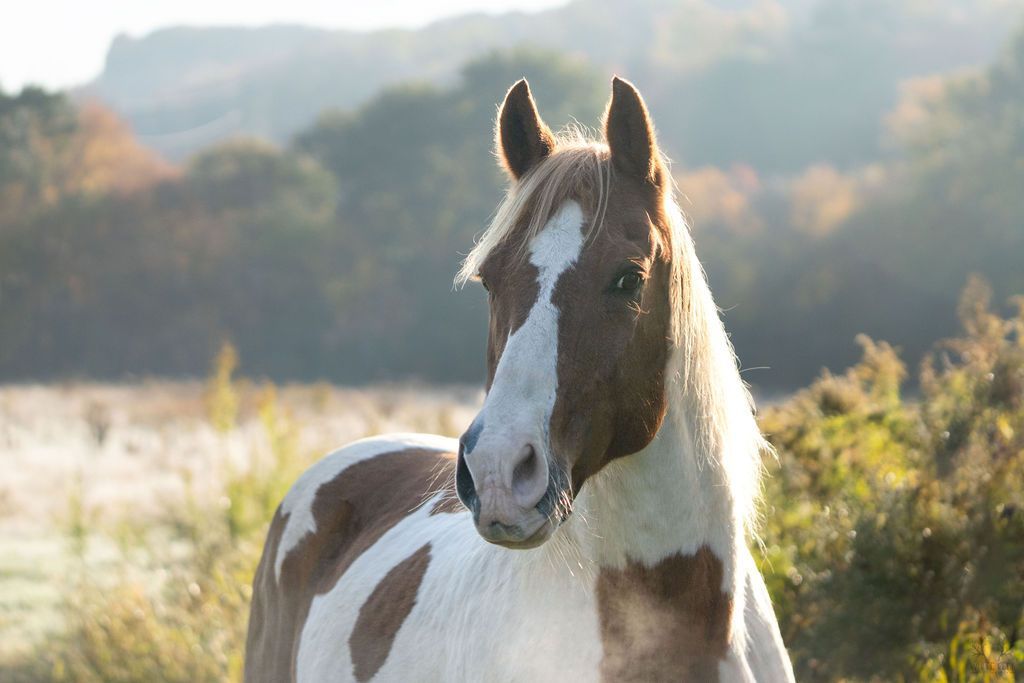Horses and Co-regulation: Why and how it works
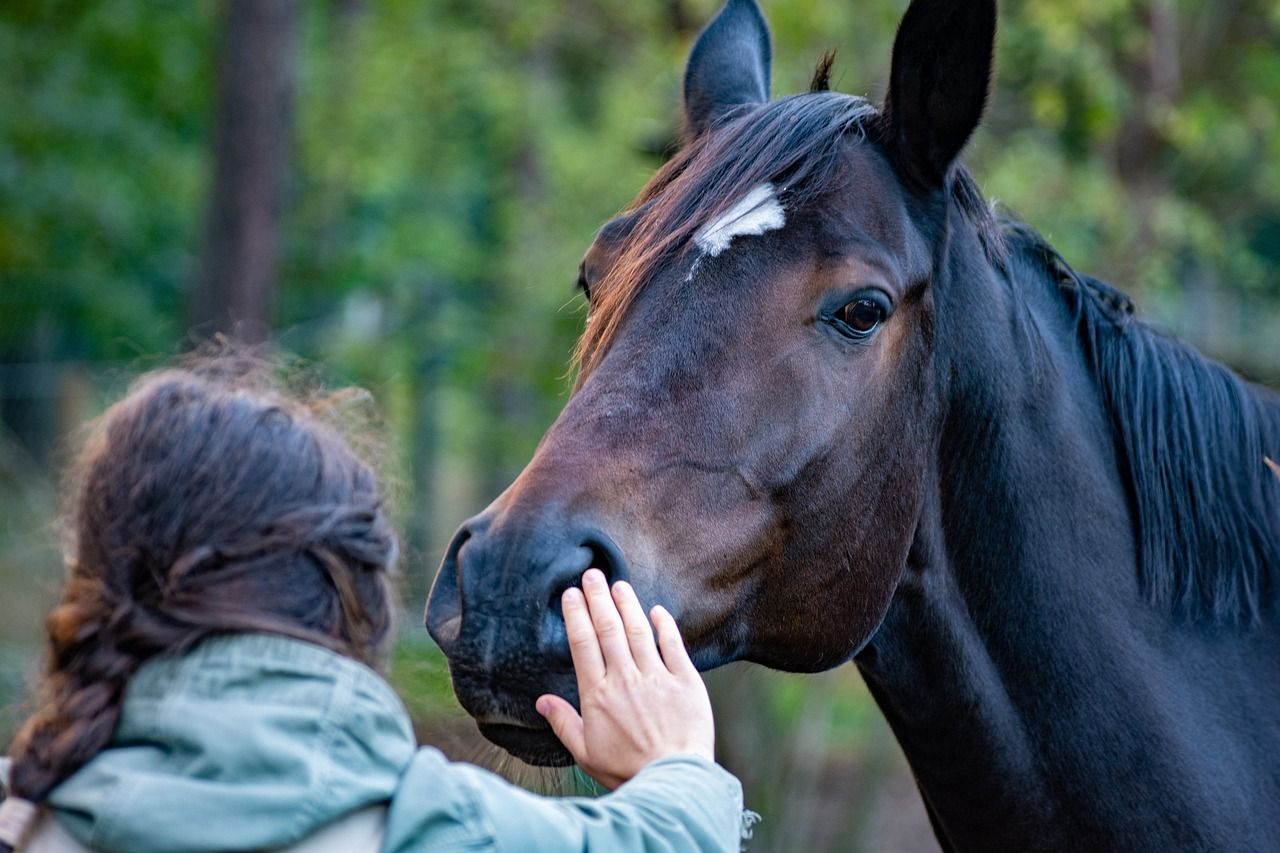
When a horse "co-regulates" with a person, it means that the horse's calm and steady nervous system helps to regulate the person's nervous system. This is a powerful mechanism for healing.
Here's a breakdown of what that means and how it works:
1. The Nervous System and Regulation:
Our nervous system is constantly scanning the environment for cues of safety or danger. When we feel threatened, our "fight-or-flight" response (sympathetic nervous system) kicks in, leading to increased heart rate, rapid breathing, and a state of hypervigilance. When we feel safe, our nervous system moves into a calmer, more relaxed state (parasympathetic nervous system). Many people, especially those who have experienced trauma, can get "stuck" in a dysregulated state of stress and anxiety.
2. Horses as Natural Co-Regulators:
Horses are prey animals, which means their survival depends on being highly attuned to their environment and the emotional states of those around them. They are experts at reading non-verbal cues, like a person's body language, breathing patterns, and even heart rate variability.
Because horses are so sensitive, they often react to a person's emotional state. If a person is anxious or stressed, the horse may become tense or skittish. However, a calm, present horse can also serve as a "touchstone" for a person's nervous system.
3. The Process of Co-Regulation:
When a person in a dysregulated state interacts with a calm horse, their nervous system can begin to "attune" to the horse's. The horse's slow, steady heartbeat and rhythmic breathing can act as a signal of safety to the person's brain. This can help the person's nervous system to shift out of a stress response and into a more balanced state.
This isn't just a psychological phenomenon; some studies suggest that the heart rhythms of humans and horses can actually synchronize. This process, known as heart coherence, can lead to a sense of centeredness, reduced stress, and emotional balance.
4. The Benefits for people:
They can learn Self-Regulation: They get a felt sense of what it feels like to be calm and safe, which can help them learn to regulate their own emotions and nervous system.
Process Trauma: The non-judgmental presence of a horse can provide a safe space for people to access and process difficult emotions that may be too overwhelming to address in traditional talk therapy.
Develop Trust: For those with relational trauma, the consistent and honest feedback from a horse can help rebuild a sense of trust, first with an animal and then with people.
Increase Self-Awareness: The horse's reactions serve as a mirror, giving immediate, honest feedback about a person's internal state and how it impacts those around them.



